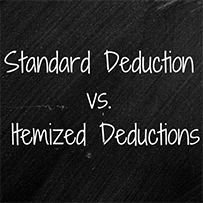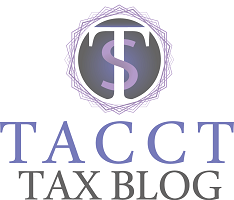
Itemize or Choose the Standard Deduction
Most taxpayers claim the standard deduction when they file their federal tax return. However, some filers may be able to lower their tax bill by itemizing. Find out which way saves the most money by figuring taxes both ways.
Itemizing your deductions is best whenever your deductions are greater than the standard deduction. For example, many homeowners choose to itemize because mortgage-interest payments along with local property taxes and uninsured medical expenses often add to be more than the standard deduction.
So, if you believe that you qualify for deductions that are greater than the standard deduction you will receive, then make sure to itemize everything you can to lower your tax bill.
For those who do itemize, beware that deductions are limited and can be phased out if your adjusted gross income for 2016 exceeds the following:
- Single: $259,400
- Married filing jointly or qualifying surviving spouse: $311,300
- Married filing separate: $155,650
- Head of household: $285,350
Here are some tips to help you decide:
1. Figure Your Itemized Deductions. Taxpayers need to add up deductible expenses they paid during the year. These may include expenses such as:
- Home mortgage interest (Points and PMI may be deductible)
- State and local income taxes or sales taxes (but not both)
- Real estate and personal property taxes
- Cash and non-cash gifts to charities including mileage
- Casualty or theft losses
- Unreimbursed medical, dental, and vision expenses including mileage
- Unreimbursed employee business expenses (union dues, mileage, uniforms, etc.)
Special rules and limits apply. Visit IRS.gov and refer to Publication 17, Your Federal Income Tax, for more details.
2. Know The Standard Deduction. If a taxpayer doesn’t itemize, then the basic standard deduction for 2016 depends on their filing status. If the taxpayer is:
- Single – $6,300
- Married Filing Jointly – $12,600
- Head of Household – $9,300
- Married Filing Separately – $6,300
- Qualifying Widow(er) – $12,600
If a taxpayer is 65 or older, or blind, the standard deduction is higher than the previous amounts. The deduction may be limited if the taxpayer can be claimed as a dependent.
3. Check the Exceptions. There are some situations where the law does not allow a person to claim the standard deduction. This rule applies if the taxpayer is married filing a separate return and their spouse itemizes. In this case, the taxpayer’s standard deduction is zero and they should itemize any deductions. See Publication 17 for more on these rules.
4. Use the IRS ITA Tool. Go to IRS.gov and use the Interactive Tax Assistant tool. It can help determine whether a taxpayer can use the standard deduction. It can also help a filer figure their eligibility for certain itemized deductions.
Resources
- Standard Deduction
- Deductible Taxes
- Property Tax
- Real Estate Tax
- Sales Tax
- Charitable Contributions
- Gambling Loss
- Miscellaneous Expenses
- Interest Expense
- Home Mortgage Interest
- Union/Club Expenses
- Moving Expenses
Follow us: @the_tax_lady | TACCT on Facebook
Refer-a-Friend and get paid! Your referral is the highest compliment you can give us.
Read our March 2017 Tax Insight Newsletter (pdf)



